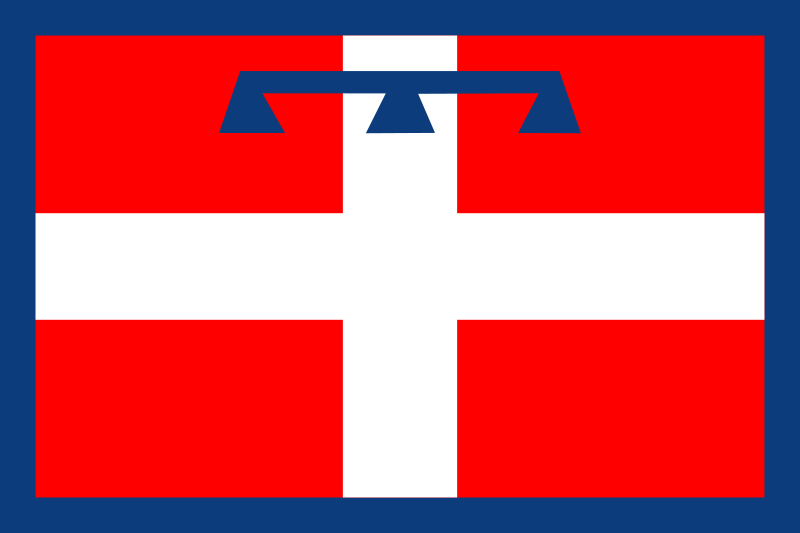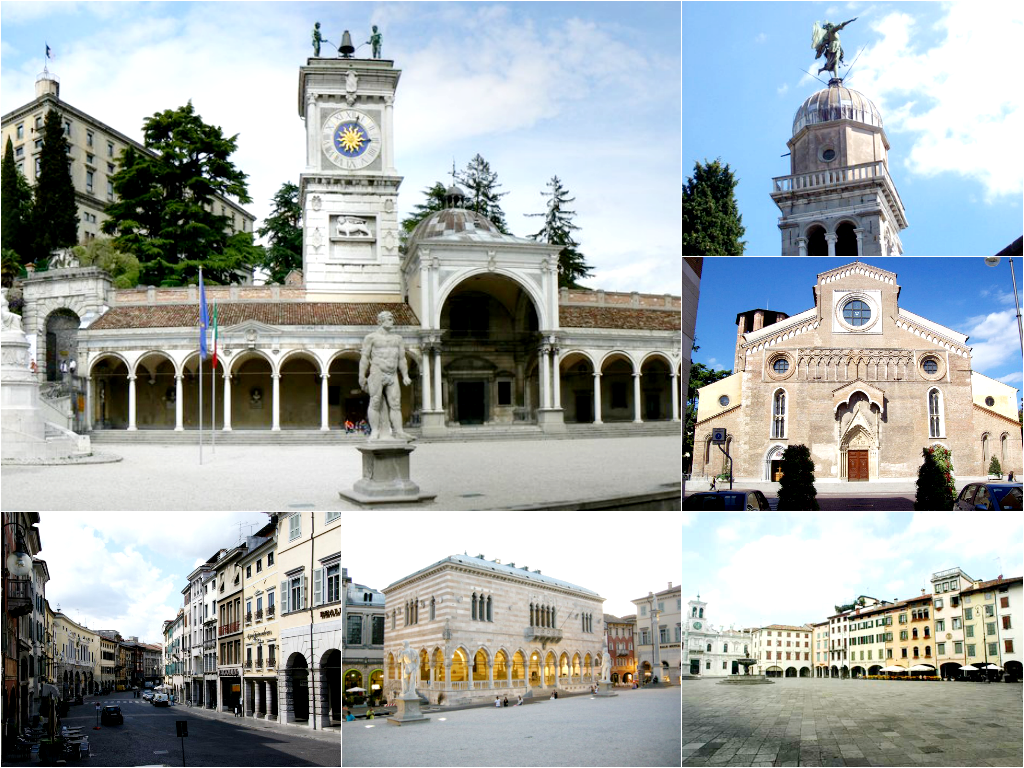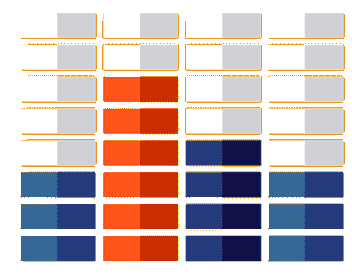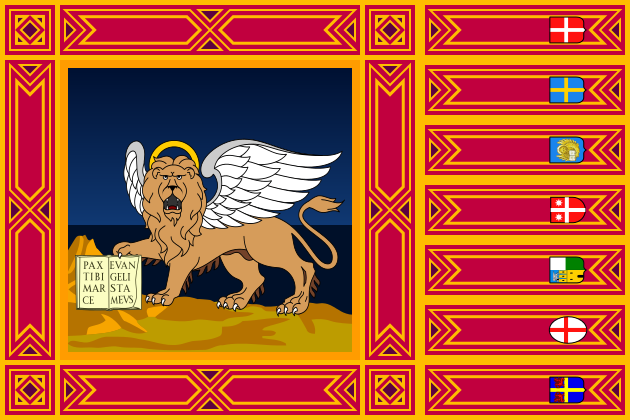
Deutsch-Chinesische Enzyklopädie, 德汉百科
 FIFA Fussball-Weltmeisterschaft 1990
FIFA Fussball-Weltmeisterschaft 1990
 FIFA Fussball-Weltmeisterschaft 1990
FIFA Fussball-Weltmeisterschaft 1990

 History
History

 International cities
International cities
 Turin
Turin

 International cities
International cities
 *World Design Capital
*World Design Capital
 Italy
Italy
 Winter Olympics
Winter Olympics
 2006 Winter Olympics
2006 Winter Olympics

 Piemonte
Piemonte
 Turin
Turin

 Ski vacation
Ski vacation

 Cities founded by the Romans
Cities founded by the Romans

 World Heritage
World Heritage

都灵(意大利语:Torino [toˈriːno] ![]() 聆听;皮埃蒙特语:Turin [tyˈɾiŋ];拉丁语:Augusta Taurinorum),中国大陆和港澳地区称为都灵,台湾称为杜林,是位于意大利北部的重要城市,皮埃蒙特大区和都灵广域市的首府。它坐落在波河的左岸,距离米兰大约140千米(87英里),阿尔卑斯山环绕在城市的西北。都灵中心区有面积130.17km²,人口911,534[2],是意大利人口第四多的城市;都灵城市区有面积1,126.6 km²,人口1,745,221[3];都灵都市圈有面积1,977 km²,人口2,200,000[4](占意大利总人口的3.4%[5])。
聆听;皮埃蒙特语:Turin [tyˈɾiŋ];拉丁语:Augusta Taurinorum),中国大陆和港澳地区称为都灵,台湾称为杜林,是位于意大利北部的重要城市,皮埃蒙特大区和都灵广域市的首府。它坐落在波河的左岸,距离米兰大约140千米(87英里),阿尔卑斯山环绕在城市的西北。都灵中心区有面积130.17km²,人口911,534[2],是意大利人口第四多的城市;都灵城市区有面积1,126.6 km²,人口1,745,221[3];都灵都市圈有面积1,977 km²,人口2,200,000[4](占意大利总人口的3.4%[5])。
都灵是一国际化的欧洲城市,[6][7] 都灵有时被称为“意大利自由的摇篮”、[8]、“阿尔卑斯之都”、“萨沃亚之都”。它拥有众多的文化设施和其他名胜。都灵因为它的巴洛克、洛可可和新古典主义法式建筑而举世闻名。它的很多广场、城堡、庭园和宫殿(如贵妇宫),都是由西西里建筑师菲利波·尤瓦拉建造的,他在设计时借鉴了法国经典建筑凡尔赛宫。[9] 这些法式建筑的典范包括:王宫、斯杜皮尼吉行宫和苏佩尔加大教堂。许多意大利高等教育机构位于此地,如都灵大学、都灵理工大学、都灵美术学院等。还有许多重要和著名的博物馆,如埃及博物馆[10] 和安托内利尖塔。
都灵曾经是欧洲重要的政治中心。1563年,它成为了萨伏依公国的首都,随后是萨伏依王室统治下的萨丁尼亚王国的首都,最后是意大利统一之后的第一个首都(1861年—1865年)。[11] 同时,它也是萨沃亚王室(意大利王室)的故乡。[12] 虽然因为第二次世界大战,它的大部分政治意义和重要性都丢失了,它还是在战后成为了欧洲重要的工业、商业和贸易的集散地。它现在是意大利的工业中心之一,和米兰、热那亚组成了“工业铁三角”。从经济上来说,都灵紧随罗马和米兰之后,是意大利第三大城市。[13] 它的GDP高达580亿美元,排名世界第78位。[14] 虽然不像罗马、米兰那样是“世界级城市”,GaWC评其为“适合发展”级别。[15]
都灵是意大利汽车制造业的摇篮,被称为“意大利汽车之都”或者“意大利的底特律”。是汽车品牌菲亚特、蓝旗亚和阿尔法·罗密欧的总部所在地。[16][17] 都灵还拥有足球俱乐部尤文图斯和都灵,举办过2006年冬季奥林匹克运动会。一些国际空间站设备,如和谐号节点舱和哥伦布实验舱,也是在都灵制造的。
トリノ(伊: Torino (![]() 音声ファイル))は、イタリア共和国ピエモンテ州にある都市で、その周辺地域を含む人口約87万人の基礎自治体(コムーネ)。ピエモンテ州の州都であり、トリノ県の県都。イタリア第4の人口規模を持つ。都市圏の人口は約170万人。一時は100万都市だったが昨今は人口減少が著しい。
音声ファイル))は、イタリア共和国ピエモンテ州にある都市で、その周辺地域を含む人口約87万人の基礎自治体(コムーネ)。ピエモンテ州の州都であり、トリノ県の県都。イタリア第4の人口規模を持つ。都市圏の人口は約170万人。一時は100万都市だったが昨今は人口減少が著しい。
ミラノに次ぐイタリア第2の工業都市であり、自動車工業の拠点である。近代にはサルデーニャ王国の首都が置かれた。サヴォイア王家の王宮群は世界遺産に登録されている。
Turin (/tjʊəˈrɪn, ˈtʊərɪn/;[2] Italian: Torino [toˈriːno] (![]() listen); Piemontese: Turin [tyˈriŋ])[3] is a city and an important business and cultural centre in northern Italy. It is the capital city of the Metropolitan City of Turin (an administrative division of Italy) and of the Piedmont region, and was the first capital city of Italy from 1861 to 1865. The city is located mainly on the western bank of the Po River, in front of Susa Valley, and is surrounded by the western Alpine arch and Superga Hill. The population of the city proper is 883,281 (30 November 2017)[4] while the population of the urban area is estimated by Eurostat to be 1.7 million inhabitants. The Turin metropolitan area is estimated by the OECD to have a population of 2.2 million.[5]
listen); Piemontese: Turin [tyˈriŋ])[3] is a city and an important business and cultural centre in northern Italy. It is the capital city of the Metropolitan City of Turin (an administrative division of Italy) and of the Piedmont region, and was the first capital city of Italy from 1861 to 1865. The city is located mainly on the western bank of the Po River, in front of Susa Valley, and is surrounded by the western Alpine arch and Superga Hill. The population of the city proper is 883,281 (30 November 2017)[4] while the population of the urban area is estimated by Eurostat to be 1.7 million inhabitants. The Turin metropolitan area is estimated by the OECD to have a population of 2.2 million.[5]
The city has a rich culture and history, being known for its numerous art galleries, restaurants, churches, palaces, opera houses, piazzas, parks, gardens, theatres, libraries, museums and other venues. Turin is well known for its Renaissance, Baroque, Rococo, Neo-classical, and Art Nouveau architecture. Many of Turin's public squares, castles, gardens and elegant palazzi such as the Palazzo Madama, were built between the 16th and 18th centuries. A part of the historical center of Turin was inscribed in the World Heritage List under the name Residences of the Royal House of Savoy.
The city used to be a major European political center. From 1563, it was the capital of the Duchy of Savoy, then of the Kingdom of Sardinia ruled by the Royal House of Savoy, and the first capital of the unified Italy (the Kingdom of Italy) from 1861 to 1865.[6][7] Turin is sometimes called "the cradle of Italian liberty" for having been the birthplace and home of notable individuals who contributed to the Risorgimento, such as Cavour.[8]
The city currently hosts some of Italy's best universities, colleges, academies, lycea and gymnasia, such as the University of Turin, founded in the 15th century, and the Turin Polytechnic. In addition, the city is home to museums such as the Museo Egizio[9] and the Mole Antonelliana. Turin's attractions make it one of the world's top 250 tourist destinations and the tenth most visited city in Italy in 2008.[10]
Even though much of its political significance and importance had been lost by World War II, Turin became a major European crossroad for industry, commerce and trade, and is part of the famous "industrial triangle" along with Milan and Genoa. Turin is ranked third in Italy, after Milan and Rome, for economic strength.[11] With a GDP of $58 billion, Turin is the world's 78th richest city by purchasing power.[12] As of 2010, the city has been ranked by GaWC as a Gamma World city.[13] Turin is also home to much of the Italian automotive industry.[14][15]
Turin is well known as the home of the Shroud of Turin, the football teams Juventus F.C. and Torino F.C., the headquarters of automobile manufacturers FIAT, Lancia and Alfa Romeo, and as host of the 2006 Winter Olympics.
Turin (Torino en italien, Turin en piémontais) est une ville italienne, chef-lieu de la ville métropolitaine de Turin et de la région du Piémont. Turin fut la capitale des États de Savoie de 1563 à 1713, du royaume de Sicile de 1713 à 1720, du royaume de Sardaigne de 1720 à 1861 et du royaume d'Italie de 1861 à 1865.
Torino (AFI: /toˈrino/[4], ; Turin in piemontese[5]) è un comune italiano di 879 808 abitanti[2], capoluogo dell'omonima città metropolitana e della regione Piemonte.
Cuore di un'area metropolitana che conta quasi 2 000 000 di abitanti su una superficie approssimativa di circa 2 300 km²,[6] la città di Torino è il quarto comune italiano per popolazione, il terzo complesso economico-produttivo del Paese e costituisce uno dei maggiori poli universitari, artistici, turistici, scientifici e culturali d'Italia. Nel suo territorio sono inoltre presenti aree ed edifici inclusi in due beni protetti dall'UNESCO: alcuni palazzi e zone facenti parte del circuito di residenze sabaude in Piemonte (patrimonio dell'umanità[7]) e l'area delle colline del Po (riserva della biosfera).
Città dalla storia bimillenaria, fu fondata probabilmente come Taurasia nei pressi della posizione attuale attorno al III secolo a.C. dai Taurini, popolazione ligure (o celto-ligure) dell'Italia settentrionale, e trasformata in colonia romana da Augusto col nome di Iulia Augusta Taurinorum nel I secolo a.C. Dopo il dominio ostrogoto fu capitale di un importante ducato longobardo, per poi passare, dopo essere divenuta capitale di marca carolingia, sotto la signoria nominale dei Savoia nell'XI secolo. Città dell'omonimo ducato, nel 1563 ne divenne capitale. Dal 1720 fu capitale del Regno di Sardegna (anche se solo de facto fino alla fusione perfetta del 1847, quando lo divenne anche formalmente),[8] stato che nel XIX secolo avrebbe portato all'unificazione italiana e che fece di Torino la prima capitale del Regno d'Italia (dal 1861 al 1865).
È stata la patria, natia o adottiva, di alcuni fra i più grandi scrittori e letterati italiani del XIX e XX secolo, tra i quali Edmondo De Amicis, Emilio Salgari, Italo Calvino, Natalia Ginzburg, Norberto Bobbio, Cesare Pavese e Primo Levi.
Sede nel 2006 dei XX Giochi olimpici invernali, città natale di alcuni fra i maggiori simboli del Made in Italy nel mondo, come il Martini, il cioccolato gianduja e il caffè espresso, è il fulcro dell'industria automobilistica italiana, nonché importante centro dell'editoria, del sistema bancario e assicurativo, delle tecnologie dell'informazione, del cinema, dell'enogastronomia, del settore aerospaziale, del disegno industriale e dello sport.
Turín (en italiano: Torino, en piamontés: Turin) es una ciudad, importante centro cultural y de negocios del norte de Italia, capital de la región de Piamonte, localizada principalmente en el margen izquierdo del río Po y rodeada por los Alpes. El área metropolitana de Turín, según la Organización para la Cooperación y el Desarrollo Económico, tiene una población de alrededor de 2.200.000 habitantes.2
La ciudad es rica en cultura e historia. Es conocida por sus numerosos museos de arte, sus restaurantes, sus iglesias, sus palacios, sus teatros de ópera, sus plazas, sus parques, sus jardines y sus bibliotecas, entre otros atractivos. Turín es ampliamente reconocida por su arquitectura barroca, rococo, neoclásica y Art Nouveau. Muchas de las plazas públicas de la ciudad, de los castillos, jardines y elegantes palacios (como el Palazzo Madama), fueron construidos por el arquitecto siciliano Filippo Juvarra, quien diseñó estos edificios en el estilo barroco y clásico del Palacio de Versalles, en Francia.3 Ejemplos de estos edificios de inspiración francesa incluyen el Palacio Real de Turín, el Pabellón de caza de Stupinigi y la Basílica de Superga.
Turín es frecuentemente llamada la «cuna de Italia» por ser el lugar de nacimiento de importantes políticos que contribuyeron con la unificación de Italia, como Cavour.4 La ciudad actualmente alberga algunas de las mejores universidades de Italia, como la Universidad de Turín, de seis siglos de antigüedad, y el Politécnico de Turín. También se encuentran en la ciudad museos prestigiosos e importantes, como el Museo Egipcio de Turín5 (el más antiguo en el mundo y considerado el segundo más importante en el mundo después de El Cairo por valor de los hallazgos) y la Mole Antonelliana. Los diversos monumentos y atracciones de Turín la convierten en una de los 250 principales destinos turísticos del mundo y en la décima ciudad más visitada de Italia para el año 2008.6
La ciudad solía ser un importante centro político europeo, siendo la primera capital de Italia en 1861 y la ciudad de residencia de la Casa de Saboya, la familia real de Italia.7 A pesar de que mucho de su significado e importancia política se había perdido cuando comenzó la Segunda Guerra Mundial, se convirtió en uno de los principales centros industriales y comerciales de Europa, y actualmente es una de las ciudades más industrializadas de Italia, formando junto con Milán y Génova el famoso "triángulo industrial". A pesar de tener muchos menos habitantes que Roma y Milán, Turín es la tercera ciudad más rica de Italia, después de estas.8 Con un Producto Interno Bruto de 58.000 millones de dólares, Turín es la ciudad número 78 en la lista de las más ricas del mundo por su poder adquisitivo.91011 Turín es también la sede de gran parte de la potente industria automovilística italiana.1213
La ciudad es también conocida por resguardar la «Sábana Santa», por ser la sede de los equipos de fútbol Juventus F.C. y Torino Football Club, el lugar donde se producen los coches FIAT, Lancia, Alfa Romeo, Maserati y la sede de los juegos olímpicos de invierno de 2006. Varios módulos de la Estación Espacial Internacional, como el Harmony y el Columbus, fueron fabricados en Turín.
Fue la capital del Ducado de Saboya desde 1563, luego del Reino de Cerdeña y finalmente la primera capital de Italia.14 Piero Fassino fue el alcalde de Turín, elegido en mayo de 2011 para un mandato de 5 años, representando a una coalición de centro-izquierda y fue a su vez el sucesor de Sergio Chiamparino. Desde junio de 2016, la alcaldesa es la economista Chiara Appendino, del partido Movimento 5 Estrellas.
Тури́н (итал. Torino [toˈriːno], пьем. Turin [tyˈɾiŋ]) — город в Италии, важный деловой и культурный центр северной Италии. Административный центр региона Пьемонт и одноимённой провинции Турин.
Расположен при впадении реки Дора-Рипария в реку По, на Паданской равнине у подножия Западных Альп, на подступах к Альпийским перевалам.
Четвёртый после Рима, Милана и Неаполя город Италии по количеству жителей, насчитывает около 880 тыс. чел. (2017), вместе с пригородами 1,7 миллион человек.
Город имеет богатую историю и культуру, и известен своими арт-галереями, дворцами, театрами, музеями, парками. Турин также знаменит своей архитектурой в стилях барокко, рококо, неоклассицизма и модерна.
Большая часть замков, дворцов (в частности Палаццо Мадама), садов и площадей были построены в XVI-XVIII вв. в процессе перевода столицы Савойского герцогства (позднее Сардинское королевство) из Шамбери (ныне Франция) в Турин.
Турин иногда называют «колыбелью итальянской свободы», за то, что он является родным городом заметных политиков и людей, внесших большой вклад в Рисорджименто, например Камилло Бенсо ди Кавур. В городе находятся множество университетов, колледжей, академий, лицеев и гимназий. Среди них основанный в XV веке Туринский университет. Самыми известными достопримечательностями Турина являются Египетский музей и символ города Моле Антонеллиана. Эти и многие другие достопримечательности делают город привлекательным для туристов со всего мира и позволяют Турину входить в десятку самых посещаемых городов Италии[3].
Город в XIX веке являлся важным политическим центром Европы. В 1861 году Турин стал первой столицей объединенной Италии и наряду с этим являлся столицей для Савойского дома, правящей династии Королевства Италии. Несмотря на то, что большая часть политической значимости Турина была растеряна после отмены монархии в Италии, город остается важным промышленным, экономическим и торговым центром Европы и Италии. Турин является третьим по экономическим показателям городом страны, после Милана и Рима. Также Турин является своего рода столицей автомобилестроения Италии. В городе располагаются штаб-квартиры компаний FIAT, Lancia, Iveco.
Город известен в мире благодаря христианской реликвии — Туринской плащанице, а также футбольным командам «Ювентус» и «Торино». Турин — столица зимних Олимпийских игр 2006 года.
Покровителем города считается Св. Иоанн Креститель (итал. San Giovanni Battista). Праздник города — 24 июня.

 FIFA Fussball-Weltmeisterschaft 1990
FIFA Fussball-Weltmeisterschaft 1990
 Italy
Italy

 Music
Music

 Music charts
Music charts

 Music charts
Music charts
 Listen to the italian-language hit parade
Listen to the italian-language hit parade

 Sport
Sport
 (F)Football World Cup
(F)Football World Cup

 Sport
Sport
 (*)Football songs
(*)Football songs


维罗纳(意大利语:Verona)是位于意大利北部威尼托大区阿迪杰河畔的一座历史悠久的城市,2000年入选联合国教科文组织的世界遗产。
维罗纳最初由古代意大利的埃乌加内人建造,公元前550年被古高卢人占领,公元前约300年波河流域成为罗马人的领土,公元前89年维罗纳成为罗马帝国的殖民地,维罗纳城内现存的圆形露天剧场(竞技场)建造于此后的一个世纪。
维罗纳因为处在多条贸易道路的交界,成为欧洲一座重要的城市。东哥特人从489年开始统治意大利,维罗纳成为东哥德王国狄奥多里克大帝的住所。569年伦巴底人阿尔博因取而代之,维罗纳成为伦巴第的第二大城市。774年伦巴底人在维罗纳做出对法兰克王国查理大帝的最后一次抵抗失败,维罗纳成为意大利国王的住所。952年德意志国王奥托一世入侵意大利征服伦巴第,自称意大利国王,维罗纳归属于巴伐利亚公爵家族,976年起隶属于克恩顿。12世纪开始维罗纳才获得城市的自治权,1164年创建并加入伦巴第城市联盟,中世纪后期由斯卡拉家族统治。
1509年至1517年维罗纳由神圣罗马帝国的马克西米连一世统治。维罗纳在1797年被拿破仑占领,他结束了威尼斯共和国的统治,在与意大利一起击败第一次反法同盟后,与奥地利签署合约,将维罗纳划为奥地利城市。意大利在1866年的普奥战争中与普鲁士结盟并最终战胜奥地利,维罗纳回归意大利王国。
Verona war in vorchristlicher Zeit eine Gründung der Räter und Euganeer, wurde um 550 v. Chr. vom gallischen Stamm der Cenomanen erobert und war erst ab 89 v. Chr. römische Kolonie. Das gut erhaltene Amphitheater – die Arena – entstand erst mehr als ein Jahrhundert später.
es Kaisers Augustus wurde Verona eine große Stadt. Decius schlug hier 249 den Kaiser Philippus Arabs, Konstantin 312 den Pompejanus (Schlacht von Verona). 402 gelang Stilicho hier ein Sieg über Alarich (Schlacht bei Verona). Attila plünderte und verwüstete 452 die Stadt. Dann war sie neben Pavia und Ravenna Residenz des Ostgotenkönigs Theoderich, der hier 489 Odoaker besiegt hatte und in der Sage Dietrich von Bern heißt. Aus dieser Zeit stammt der alte Name der Stadt: „Dietrichsbern“ [2]. Weiterhin war in alter Zeit die Bezeichnung „Welsch-Bern“[3] gebräuchlich (zimbrisch: Bearn).Im 5. und 6. Jahrhundert war Verona nicht nur Residenz der Ostgoten, sondern auch für den Langobardenkönig Alboin, bis es an das fränkische Reich kam. Ab 952 gehörte Verona zur Markgrafschaft Verona und damit zum Herzogtum Bayern und bzw. (ab 976) zu Kärnten. Erst zu Beginn des 12. Jahrhunderts wurde Verona selbständig und besaß eigene Stadtrechte. 1184 fand das Konzil von Verona statt.
Im Kampf gegen Kaiser Friedrich I. stand Verona mit an der Spitze des Lombardischen Städtebundes. Darauf wurde es durch die Parteikämpfe der Adelsparteien, der Montecchi (Ghibellinen) und der San Bonifazios (Guelfen), erschüttert. Zu Anfang des 13. Jahrhunderts bemächtigten sich die Ezzelini, die Beschützer der Montecchi, der Stadt. Nach dem Tod Ezzelinos da Romano (1259) wählten die Veroneser 1260 Mastino I. della Scala zum Oberhaupt (Podestà), dessen Familie 127 Jahre lang herrschte und unter Cangrande I. della Scala ihre höchste Macht und Blüte erreichte.
1387 kam Verona unter Mailands, 1405 unter Venedigs Herrschaft. Nach dem Ende der Republik Venedig ging Verona im Frieden von Campo Formio 1797 an Österreich; der vorherige, antifranzösische Aufstand der Veroneser zu Ostern wurde blutig niedergeschlagen. Unter österreichischer Herrschaft war die Stadt Teil des oberitalienischen Festungsvierecks (it.: Quadrilatero), das 1815 zur Verteidigung der österreichischen Besitztümer in Italien in den Orten Peschiera, Mantova (Mantua), Legnago und Verona errichtet wurde. Der Ausbau wurde zwischen 1833 und 1866 von österreichischen Pionieren nach Plänen des Ingenieurgenerals Franz Scholl vorgenommen. 1866 kam Verona als Ergebnis des Deutschen Kriegs zum Königreich Italien.
Heute ist die Stadt durch die Nähe zum Gardasee und zu Venedig ein beliebtes Ausflugsziel für Touristen und wirtschaftliches Zentrum der Region Venetien. 2000 wurde die Altstadt von Verona in die Liste des UNESCO-Welterbes aufgenommen.
ヴェローナ(伊: Verona (![]() 音声ファイル))は、イタリア共和国ヴェネト州西部にある都市で、その周辺地域を含む人口約25万人の基礎自治体(コムーネ)。ヴェローナ県の県都である。
音声ファイル))は、イタリア共和国ヴェネト州西部にある都市で、その周辺地域を含む人口約25万人の基礎自治体(コムーネ)。ヴェローナ県の県都である。
街の中心部には古代ローマ時代の円形競技場跡があり、街の象徴となっているほか、中世の町並みがよく残っており、2000年には「ヴェローナ市街」としてユネスコの世界遺産(文化遺産)に登録された。シェイクスピアの戯曲『ヴェローナの二紳士』『ロミオとジュリエット』の舞台としても知られる[4][5]。
Verona (Italian pronunciation: [veˈroːna] (![]() listen); Venetian: Verona or Veròna) is a city on the Adige river in Veneto, Italy, with 258,108 inhabitants. It is one of the seven provincial capitals of the region. It is the second largest city municipality in the region and the third largest in northeast Italy. The metropolitan area of Verona covers an area of 1,426 km2 (550.58 sq mi) and has a population of 714,274 inhabitants.[1] It is one of the main tourist destinations in northern Italy, because of its artistic heritage and several annual fairs, shows, and operas, such as the lyrical season in the Arena, the ancient amphitheater built by the Romans.
listen); Venetian: Verona or Veròna) is a city on the Adige river in Veneto, Italy, with 258,108 inhabitants. It is one of the seven provincial capitals of the region. It is the second largest city municipality in the region and the third largest in northeast Italy. The metropolitan area of Verona covers an area of 1,426 km2 (550.58 sq mi) and has a population of 714,274 inhabitants.[1] It is one of the main tourist destinations in northern Italy, because of its artistic heritage and several annual fairs, shows, and operas, such as the lyrical season in the Arena, the ancient amphitheater built by the Romans.
Two of William Shakespeare's plays are set in Verona: Romeo and Juliet and The Two Gentlemen of Verona. It is unknown if Shakespeare ever visited Verona or Italy, but his plays have lured many visitors to Verona and surrounding cities. The city has been declared a World Heritage Site by UNESCO because of its urban structure and architecture.
Vérone (en italien Verona /ve'ro:na/) est une très ancienne ville italienne, dans la région de Vénétie (plaine du Pô), sur les rives de l'Adige, à proximité du lac de Garde.
Fondée au Ier siècle av. J.-C., la ville historique de Vérone a connu des périodes d'expansion aux XIIIe et XIVe siècles et sous la République de Venise. Un nombre remarquable de monuments de l'Antiquité, de l'époque médiévale et de la Renaissance y sont préservés.
À la suite de la tragédie Roméo et Juliette de William Shakespeare parue en 1597, dont l'action se situe dans cette ville, la cité devient la ville romantique la plus célèbre du monde, baptisée la « ville des amants de Vérone » (maison de Juliette à Vérone).
Verona (, AFI: /veˈrona/[4][5]) è un comune italiano di 258 313 abitanti, capoluogo dell'omonima provincia situata in Veneto. È la seconda città della regione per popolazione dopo il capoluogo, Venezia, e la dodicesima a livello nazionale.[6]
Nota per essere il luogo della tragedia di Romeo e Giulietta, Verona si è sviluppata progressivamente e ininterrottamente durante duemila anni, integrando elementi artistici di alta qualità dei diversi periodi che si sono succeduti, tra i quali si ricordano in particolare il governo della famiglia Della Scala tra i secoli XIII e XVI, e quello della Repubblica Veneta tra l'inizio del Quattrocento e la fine del Settecento; per la sua arte e architettura e per la sua struttura urbana, "eccellente esempio di città fortificata", Verona è stata dichiarata patrimonio dell'umanità dall'UNESCO.[7]
Verona es una ciudad situada en el noreste de Italia, capital de la provincia del mismo nombre, una de las siete provincias de la región del Véneto.
Es una de las ciudades más atractivas e interesantes de Italia, la duodécima en población del país con 257.943 habitantes. Cercana a los lugares de mayor interés turístico del norte de este país, es, también, un dinámico centro económico. Está rodeada de colinas y atrapada por un meandro del río Adigio, a unos 30 kilómetros al este del lago de Garda.
La ciudad posee un aeropuerto internacional, vía ferroviaria y carretera, que facilitan el acceso a ella. En Verona se puede encontrar un centro histórico atractivo y a pocos metros, el Castello Scaligero del siglo XIV, la casa de Julieta, la Arena, y un teatro romano del siglo I.
Verona constituye un nodo geográfico importante. Ha sido siempre punto nodal de todos los sistemas de transporte terrestre y acuático del noroeste de Italia. En tiempos de los romanos era punto de encuentro de cuatro vías consulares: la via Gallica, la via Augusta, el Vicum Veronensium y la via Postumia.
Веро́на (итал. Verona [veˈroːna] ![]() слушать, вен. Verona) — город на северо-востоке Италии, в области Венеция, административный центр одноимённой провинции. Население — 260 135 человек (2014). Расположен на реке Адидже.
слушать, вен. Verona) — город на северо-востоке Италии, в области Венеция, административный центр одноимённой провинции. Население — 260 135 человек (2014). Расположен на реке Адидже.
Верону ежегодно посещает более трех миллионов туристов со всего мира, привлеченных памятниками архитектуры и различными культурными событиями, такими как ежегодный летний оперный фестиваль, проходящий в римском амфитеатре Арена ди Верона.
Исторические памятники и экономическое значение города связаны с его географическим положением.
Покровителями города являются св. Зенон Веронский и св. Пётр Веронский, день города — 21 мая.
 Friuli-Venezia Giulia
Friuli-Venezia Giulia
 Veneto
Veneto